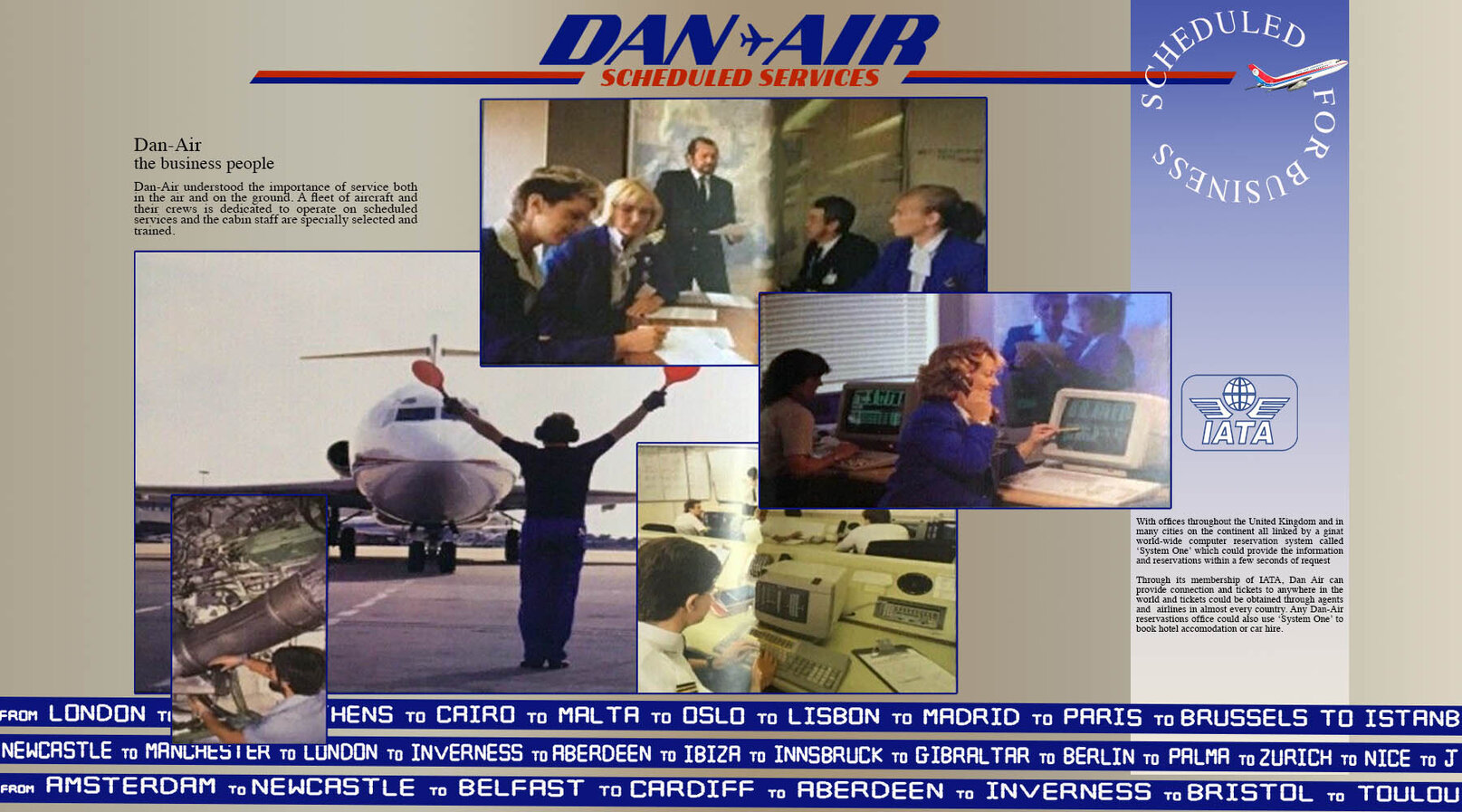
It's fair to say that Dan-Air is best remembered as a charter carrier. For many years the vast number of passengers were, indeed, flown on charter services. The regulations that were in force in the UK, and for that matter, Europe, placed heavy emphasis on Scheduled Services being carried out by state run national carriers. Regular charter flights in the 1950s could only be operated if the whole of the holiday package price was the same as a standard scheduled return fare. No UK airlines other that BEA and BOAC could operate scheduled services out of London Heathrow and even then, a scheduled service licence would only be granted to an independent airline if the two state airlines had no objections to another airline operating it! Licences in the early days were granted by the Air Traffic Licencing Board (ATLB) and later on, the Civil Aviation Authority (CAA). It is inconceivable today, that those two organisations would not only be responsible for granting licences, but that they would decide what days the services could operate, what frequency it would fly and even the fares! Each time an airline wanted to increase or decrease a fare, it would have to be approved. Approved services would be licensed for a specific period of time. At the end of the period, the licence would be reviewed.
Dan-Air's initial scheduled service would operate from their base at Blackbushe to Jersey. That service would transfer to London Gatwick when Blackbushe was scheduled for closure. Dan-Air and other carriers then moved their main operation to the recently upgraded Gatwick.
British European Airways (BEA) objected when Dan-Air applied to serve Liverpool to Rotterdam. BEA already flew Manchester to Rotterdam. BEA stated that a Liverpool service might dilute their own operation from Manchester, if people had a choice of two airports!
BEA were permitted to fly direct from Heathrow to all the European capitals, most regional UK airports had domestic services into Heathrow operated into Heathrow - the airport that denied entry for independent operators. In addition to this, BEA and the intercontinetal operator British Overseas Airways Corporation (BOAC) flew direct services from secondary airports like Manchester to many European capitals. There was very little for the independents to operate profitably. Unless a carrier like Dan-Air flew Liverpool - Rotterdam! Something, that was objected to! Ultimately, the licence was granted and Dan-Air would have to work hard to make the service a success.
In 1968 Dan-Air created 'Link City' in an effort to offer something that BEA had not tried. These short hop trips would operate, as the name suggests, in a circular rotation, flying many sectors a day. A passenger could fly from Gatwick to Bristol, where other passengers would join the flight on a ten minute flight to Cardiff before carrying on to drop off and pick up passengers in Gloucester, Manchester, Liverpool, Carlisle, Newcastle and Glasgow.
The Nord 262 joined the fleet in 1970 offering passengers greater comfort. The 'Link-City' flights had minimal turnarounds of a little as five minutes at the airports served. This convenience pleased passengers, but irritated British Rail, who formally objected to the flights.
1971 saw several different 'Link-City' services operated. Birmingham, Tees Side, Prestwick, Leeds/Bradford and Bournemouth were added to the network. Various aircraft flew the services in different directions, giving passengers greater flexibility. The seventies saw Dan-Air operate a programme of scheduled services into the Isle of Man from Manchester, Carlisle, Prestwick, Cardiff, Bristol, Leeds, Bournemouth, Newcastle, Tees-side, Jersey and Glasgow. The Channel Islands were well served from many UK airports. With Jersey and Guernsey having services from Gatwick, Bournemouth, Leeds, Manchester.
A few International services were operated in the early 1970s - Seventeen years after the airline commenced operations. These being:
- Newcastle - Stavanger & Kristiansand
- Tees Side - Stavanger
- Gatwick - Berne
- Gatwick - Ostend
- Liverpool - Amsterdam.
The Liverpool - Rotterdam service had been reasonably successful, but Dan-Air believed that there would be bigger opportunities if the service was changed to Amsterdam. There would be hearings at the CAA to approve the change. Naturally BEA objected, but for once, they were over-ruled and the new service began. For quite a long period this service was the only scheduled international flight to operate from Liverpool.
In 1972 licences were granted for
- Gatwick - Montpelier
- Gatwick - Beauvais
- Gatwick - Clermont Ferrand
- Newcastle - Bergen
Dan-Air introduced their first jet scheduled service when the Comet began operating the Liverpool - Amsterdam route. There were many obvious attractions providing a jet on the service. The flying time was reduced considerably and as the galley had ovens passengers could be served a hot meal, something none of their competitors were offering. The Comet had 119 seats and Dan-Air were disappointed that many of them were unsold making the flight unprofitable. Dan-Air had tried to operate the route with Ambassadors, Herons, Comets and none had been profitable. The airport had urged Dan-Air to change flight times and days of operation, and none of the changes had brought good results. The final effort would see the HS 748 carry out the flights, where it too failed to yield a profit.
A BAC 1-11 jet was selected to operate a regular scheduled service between Gatwick and Perpignan in southern France in 1978.
Domestic services continued to grow steadily throughout the 1970s with several airports joining the 'Link-City' network. Point to point licences would be awarded to operate between:
- Gatwick - Dinard
- Gatwick - Strasbourg
The early 1980s saw international scheduled services between:
- Gatwick - Toulouse
- Gatwick - Munich
1983 saw Dan-Air being successfully awarded licences to:
- Gatwick - Munich
- Gatwick - West Berlin
- Gatwick - Berne
- Gatwick - Zurich
British Airways lost their licence on the London Heathrow-Inverness service following complaints of poor performance and service. The state carrier had been operating the loss making flights for several years. Dan-Air were awarded the rights to operate the flights instead. It would be the first time that the airline would operate in and out of Heathrow, and they were determined not to disappoint passengers. Great strides were made with improved in-flight service on this and other scheduled services. Hot meals were provided where possible, as well as a complimentary bar service on domestic services. This was a new concept on domestic flights. Dan-Air was praised for all aspects of in flight service, even winning the best airline tea award.
In 1985 new schedules were introduced:
- Gatwick - Madrid
- Gatwick - Lisbon
- Gatwick - Alicante
- Gatwick - Seville
- Gatwick - Innsbruck
- Gatwick - Saarbrucken
The introduction of the British Aerospace 146 'whisper jet' in 1883 heralded a new standard flying. The super quiet engines and low operating costs would give Dan-Air a competitive advantage over many rivals. Dan-Air was the world's launch customer of the type. The jet could land in airports with short runways, such as Innsbruck, where it became the only jet that could serve the airport. In 1985 new route applications were successful for:
- Gatwick - Lourdes
- Gatwick - Ibiza
- Gatwick - Mahon
- Gatwick - Dublin
- Cork - Jersey
Also in 1985, for the first time, a foreign carrier would operate a domestic service in another EU country, when Dan-Air linked West Berlin and Saarbrucken in Germany. Domestic flights would operate throughout the eighties between Gatwick and Manchester, Newcastle, and Belfast.
Following the collapse of Air Europe in 1991, Dan-Air was in a position to take over many of the bankrupt carrier's routes. These included
- Gatwick - Palma
- Gatwick - Gibraltar
- Gatwick -Paris
- Gatwick - Brussels
- Gatwick - Rome
- Gatwick - Barcelona
- Gatwick - Stockholm
- Gatwick - Vienna
- Gatwick - Oslo.
- Gatwick - Athens
- Gatwick - Malta
- Gatwick - Istanbul
- Gatwick - Cairo
For full details of individual routes that Dan-Air operated - Check out the airline's ROUTE NETWORK
Other services were added or withdrawn at various times during the airline's 39 year history. Some routes were remarkably successful, such as Heathrow-Inverness. Others were less successful, such as Heathrow-Manchester, where the airline faced a price war and stiff competition from British Airways. Several regional services were operated from Manchester, Newcastle and Tees Side where Dan-Air had substantial bases. The in-flight standard of service aboard Dan-Air was high, even in the early days. The CAA, incredibly, even had rules about that! Airlines were not permitted to offer two classes on domestic flights. Nevertheless Dan-Air offered business travellers small incentives, such as radioing ahead if a passenger needed car hire upon arrival and offering wives half price tickets when accompanying their husband!
By the 1980s as competition became more stiff and rules less so, Dan-Air were able to offer services timed to meet business travellers' needs. Some aircraft did not have hot ovens to provide cooked breakfasts and Dan-Air pioneered the use of vacuum packed catering boxes where meals could be brought on board and stay hot for several hours. The Inverness-Heathrow early morning service was praised as the new standard in domestic service catering. Dan-Air served haggis on the glorious 12th, local whiskey on Burn's Night and even sourced local preserves for breakfasts. The introduction of lounges for business travellers was introduced in the late 1980s. These sanctuaries provided quiet time for business passengers to work, eat and relax at airports. A dedicated business cabin 'Class Elite' was launched in 1987. This featured dedicated check in, lounge access, priority boarding and disembarking, increased luggage, limousine transfers, superior in flight catering on board a separate cabin, where passengers were given much improved leg room. If the cabin layout had three seats, the middle seat was not sold, but instead turned into a table. As the literature presented here shows, Dan-Air Scheduled Services had come a long way in thirty nine years.
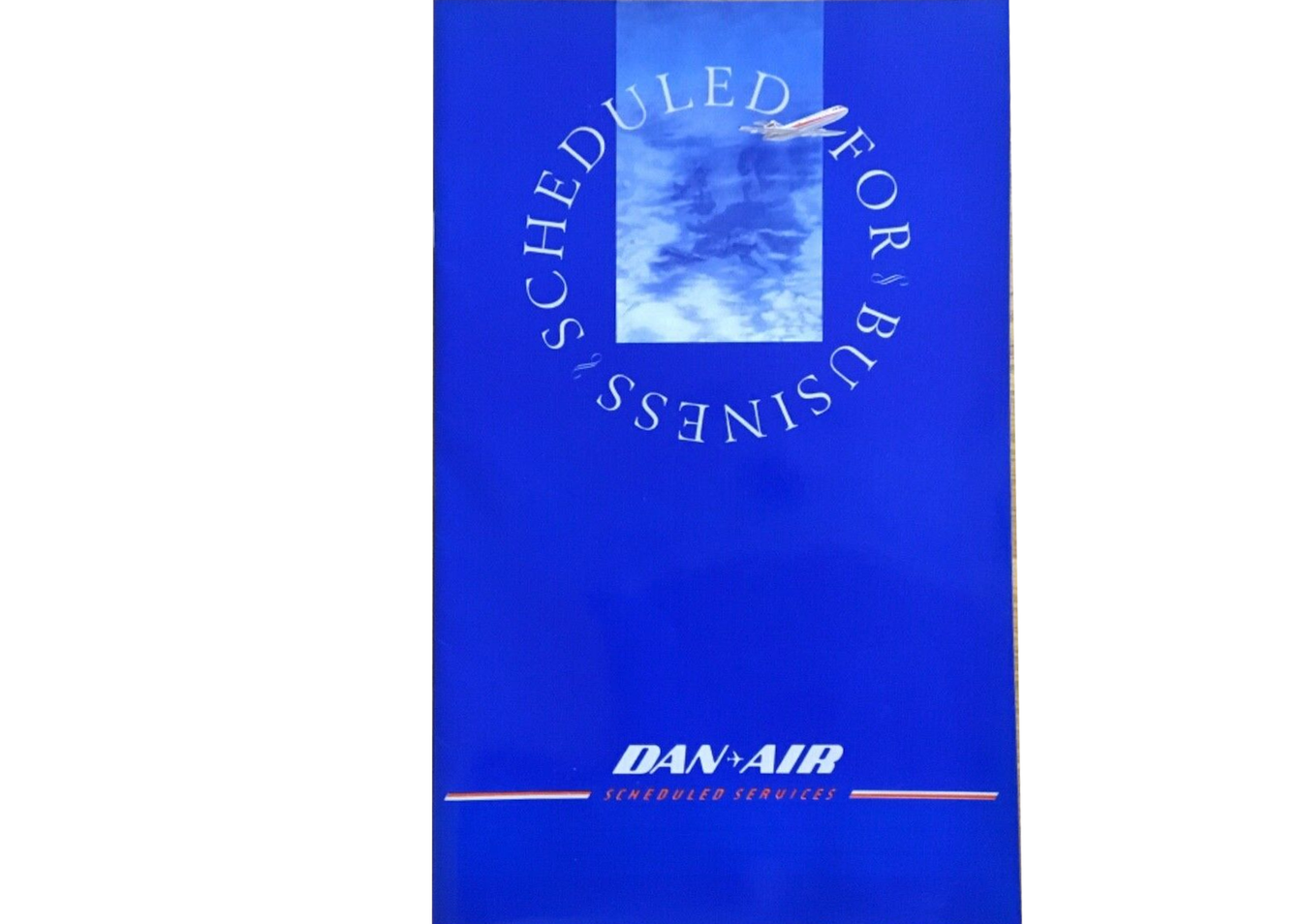
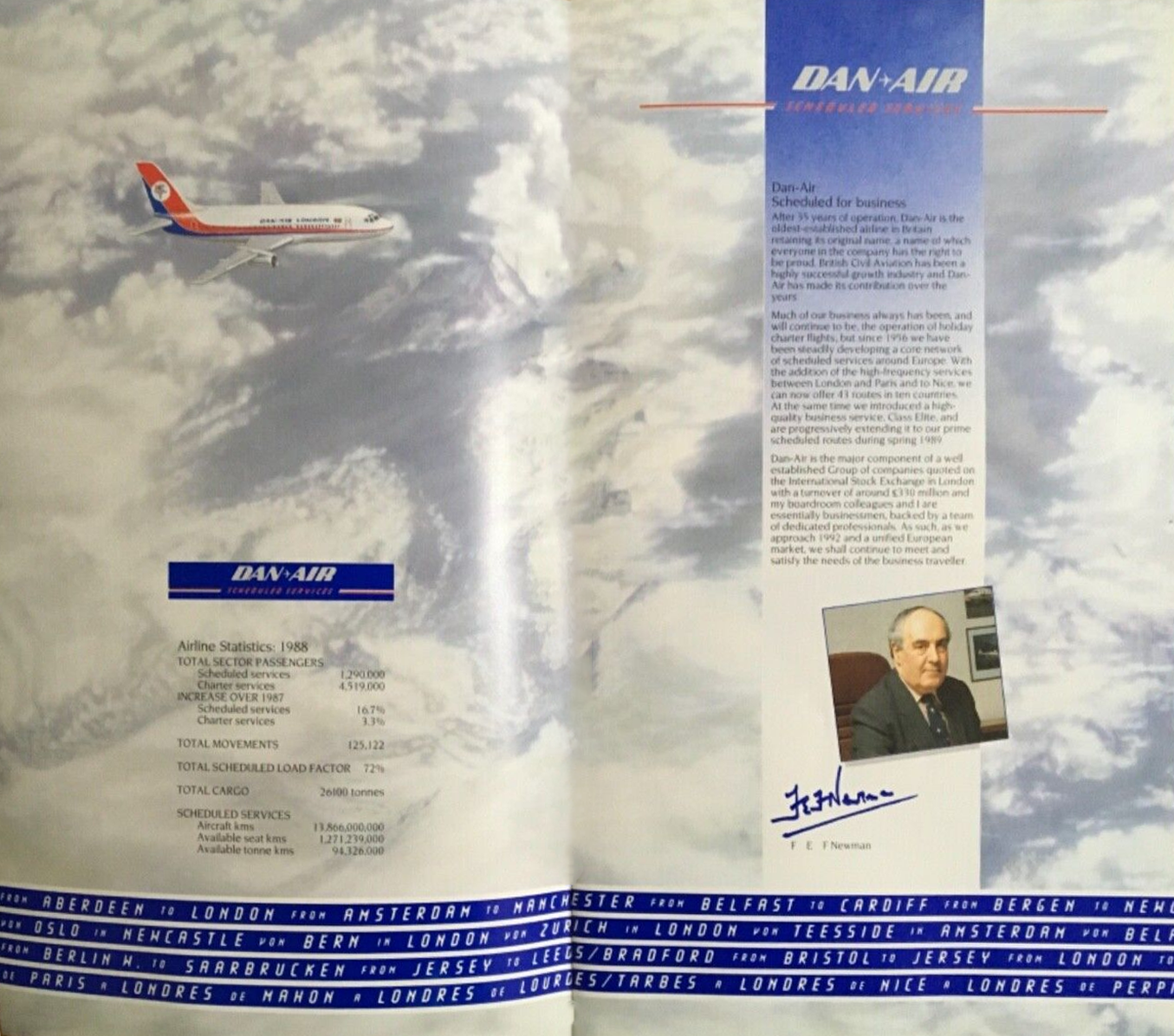
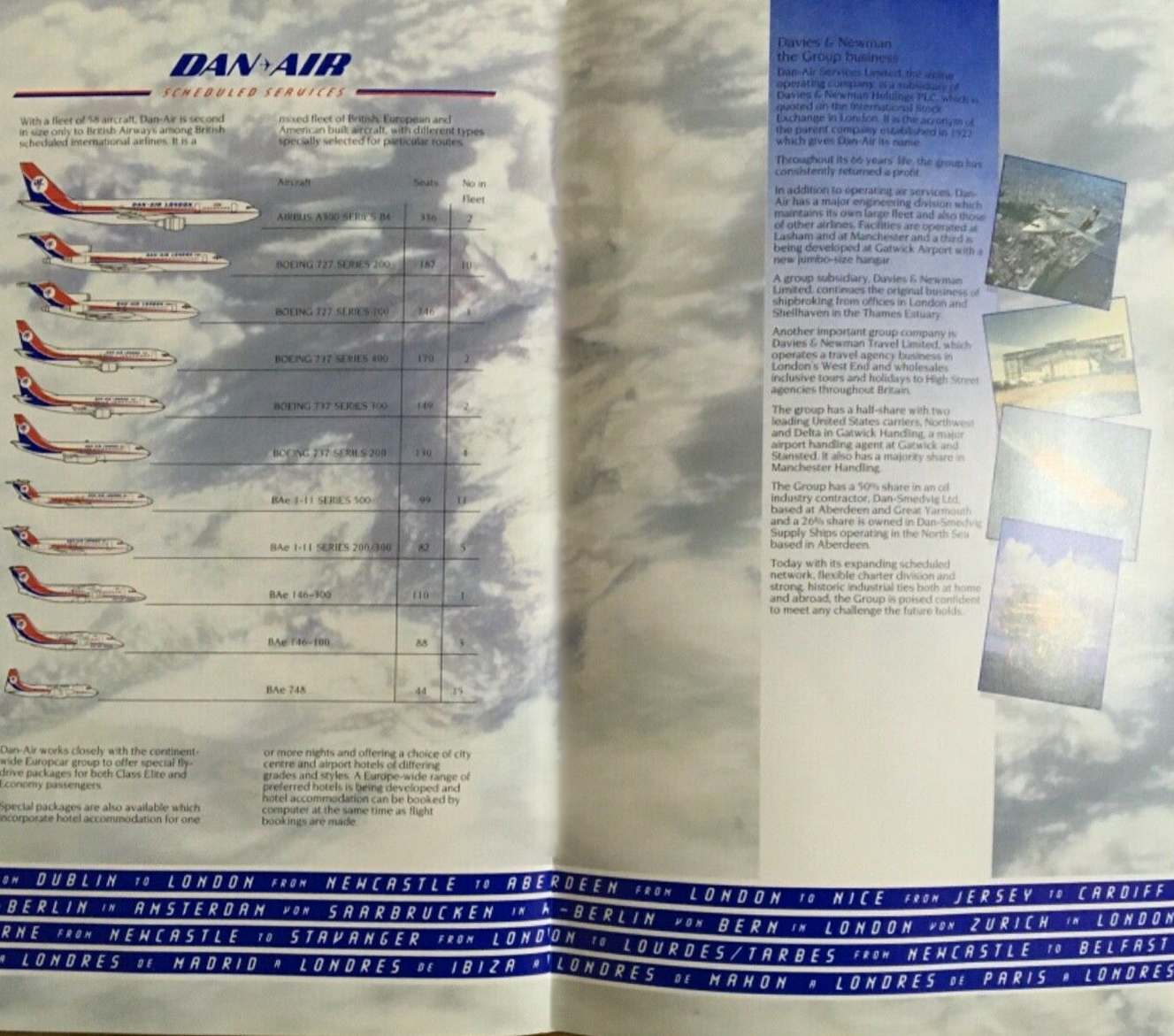
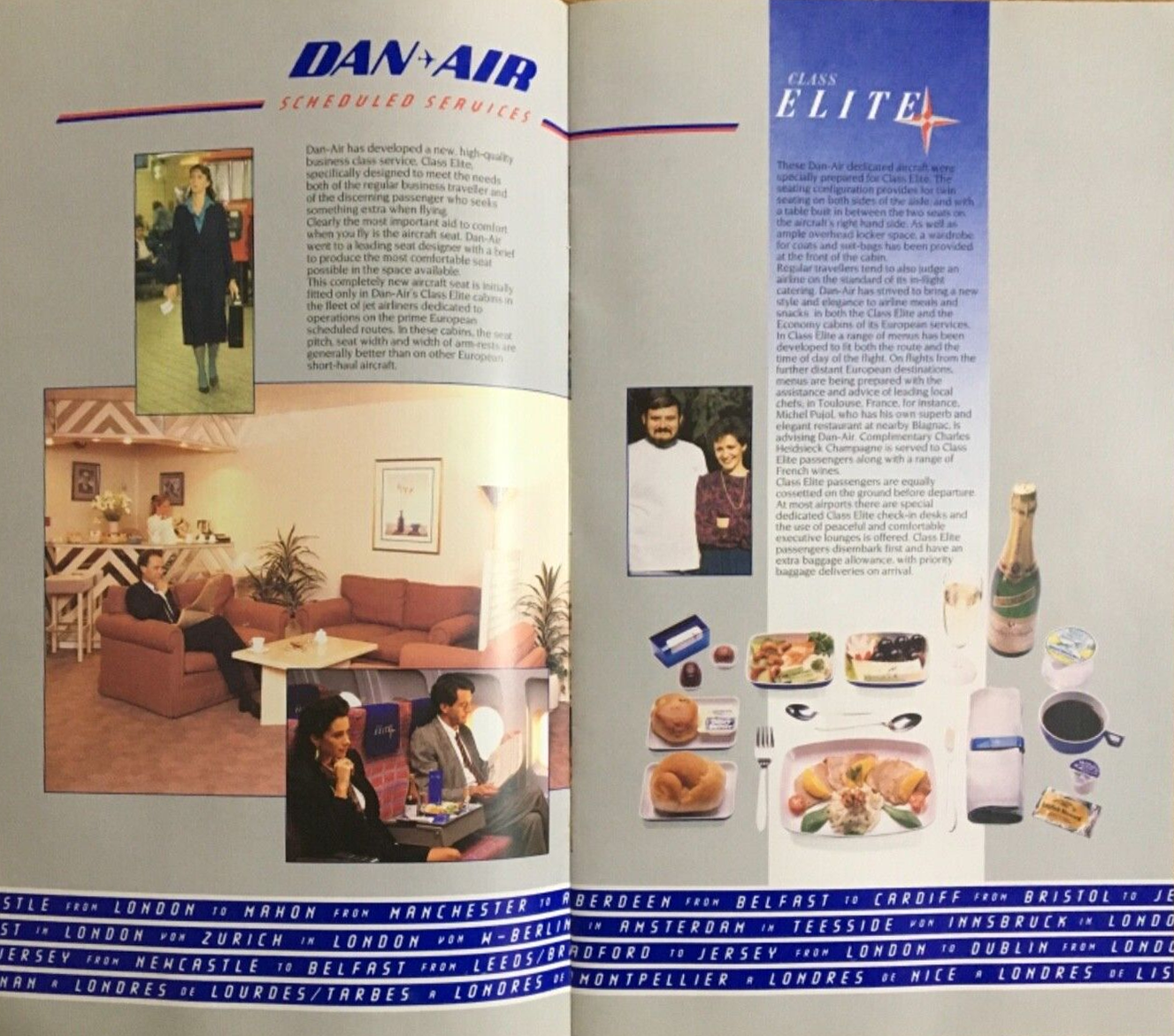
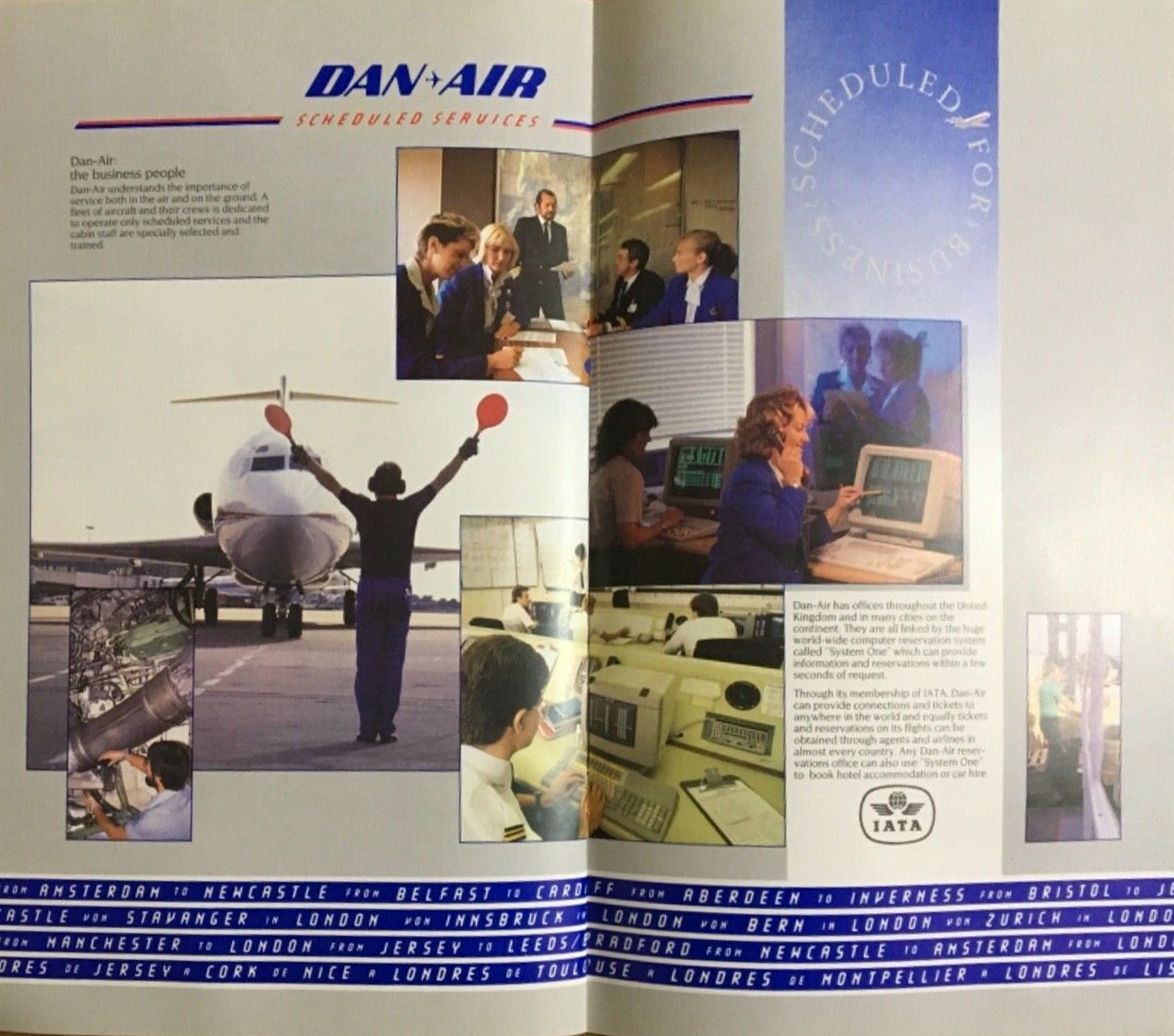
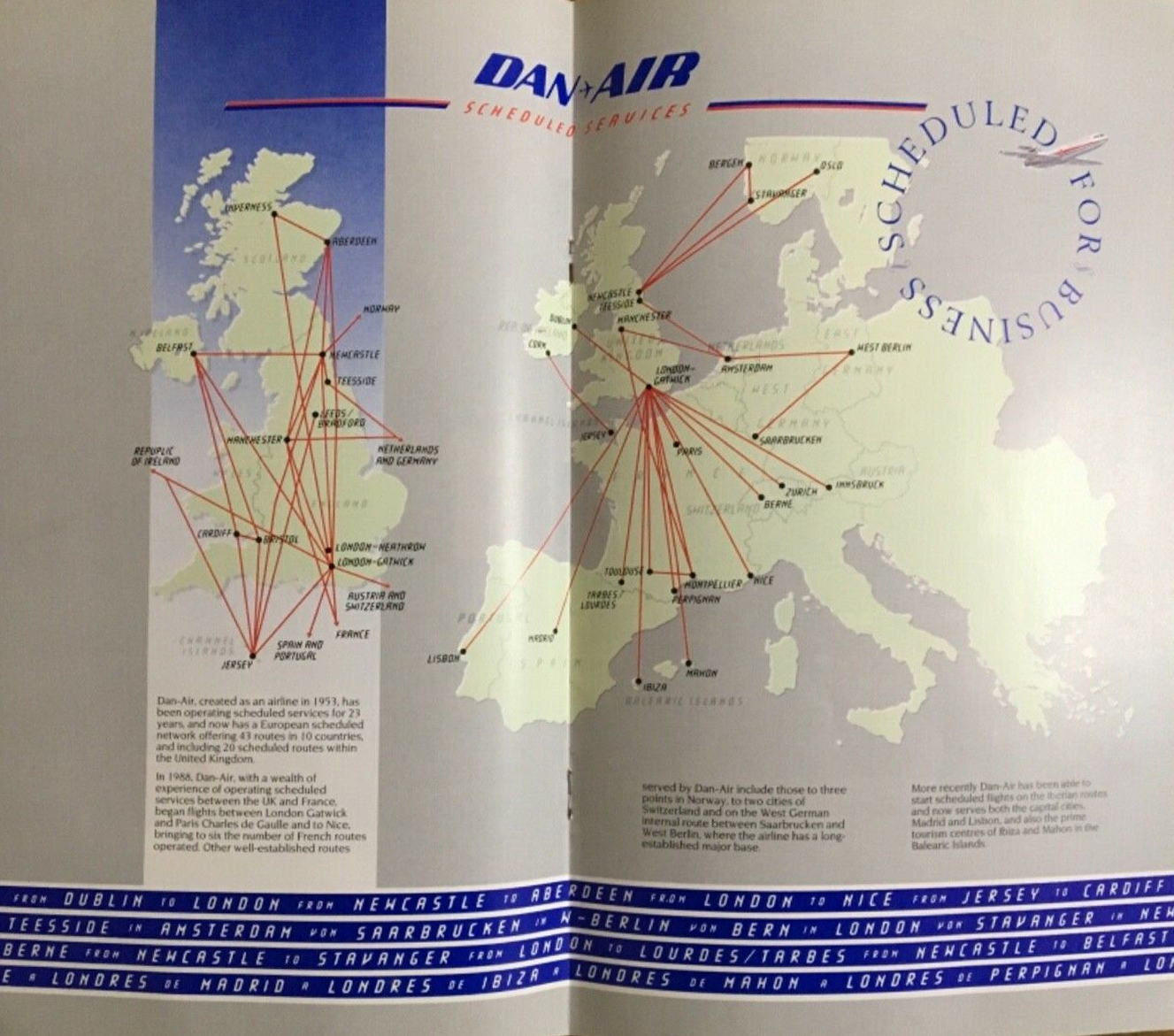
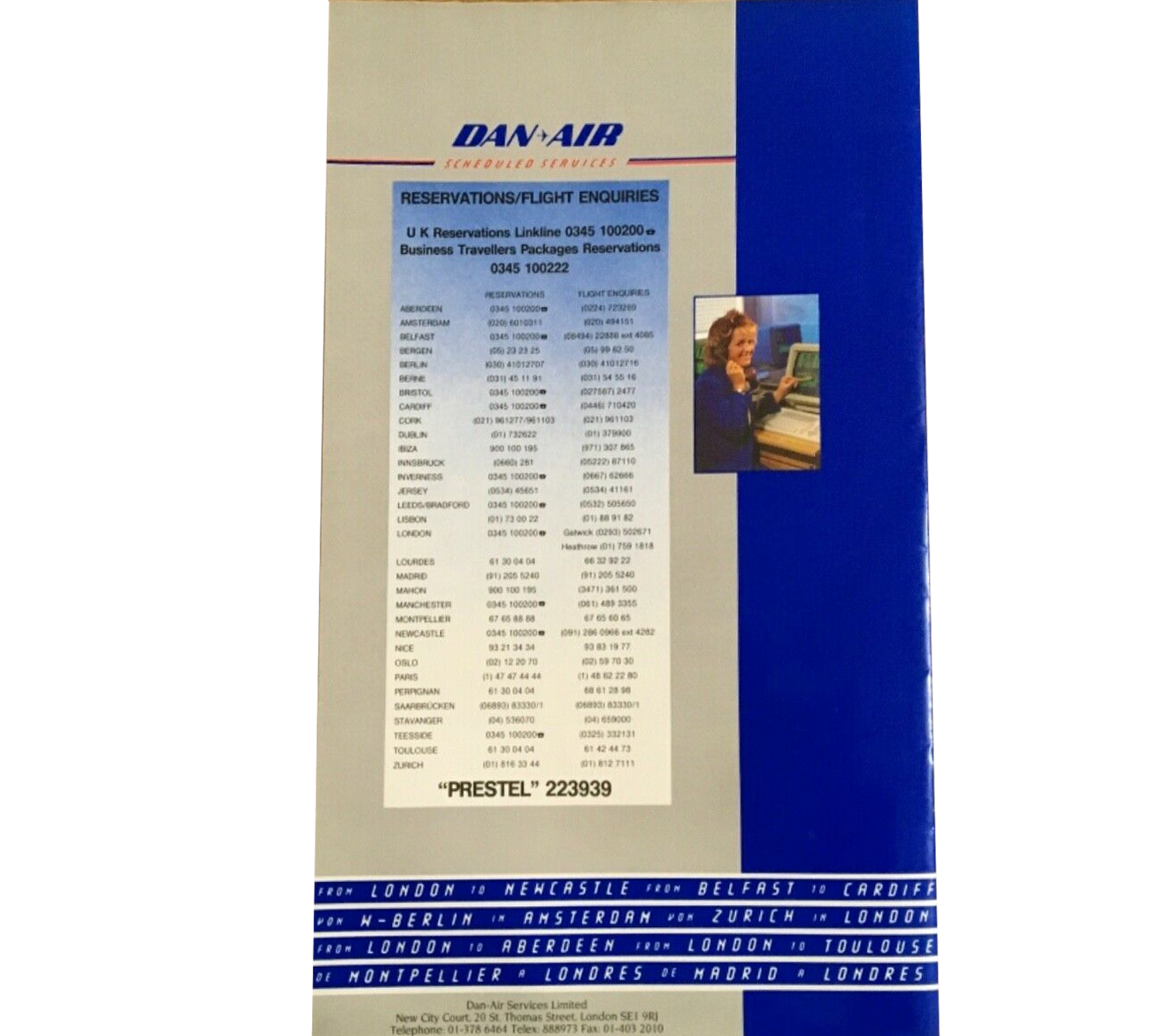
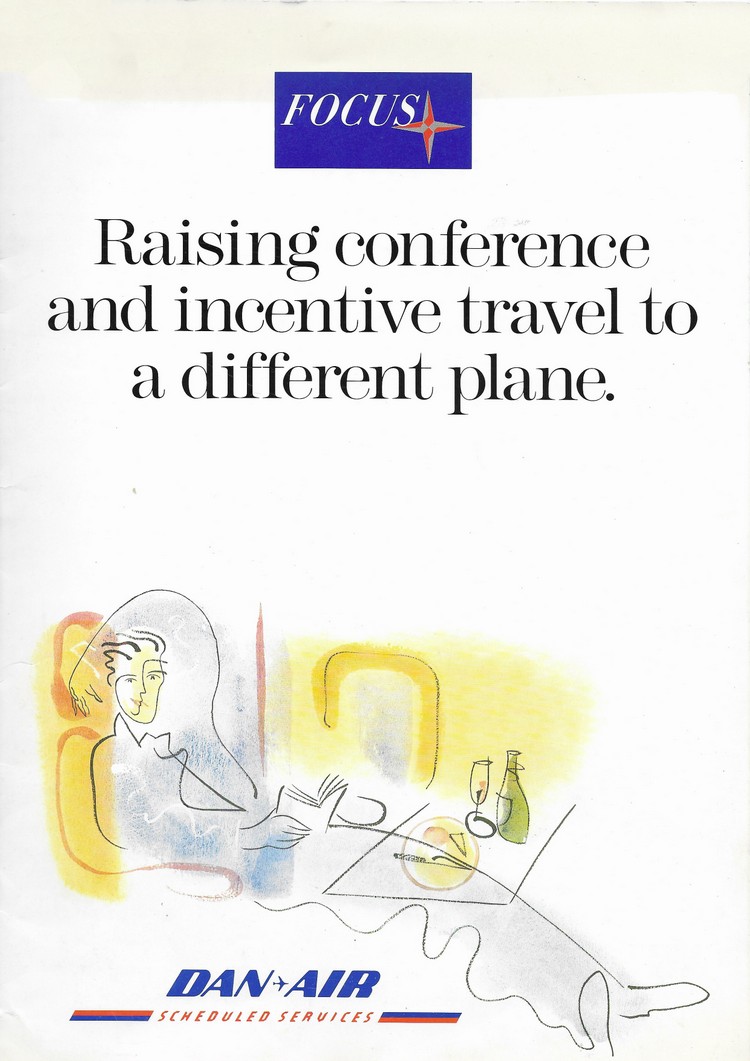
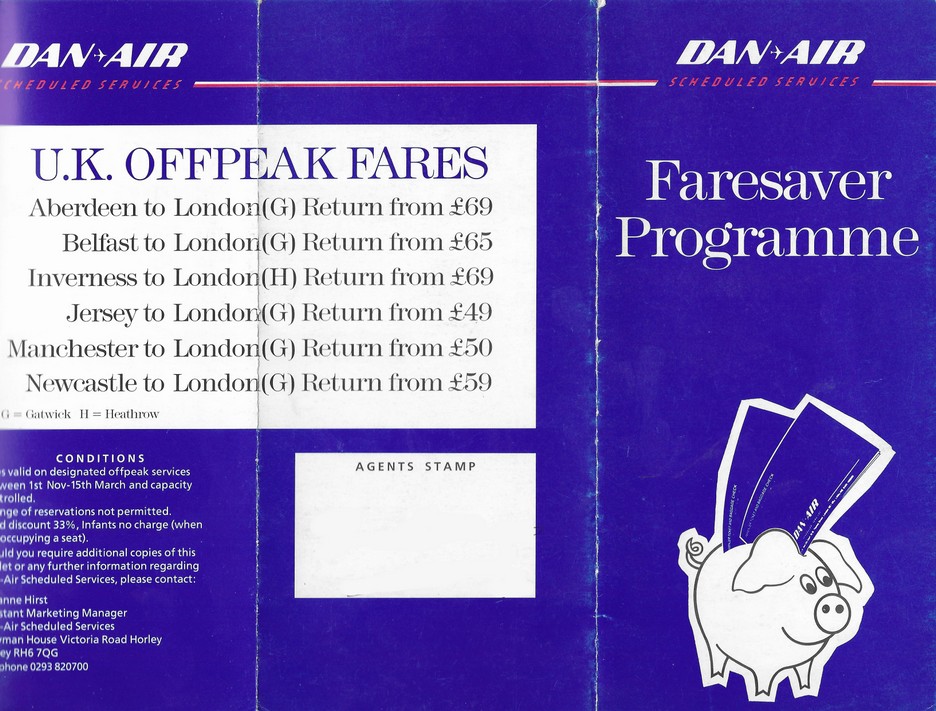
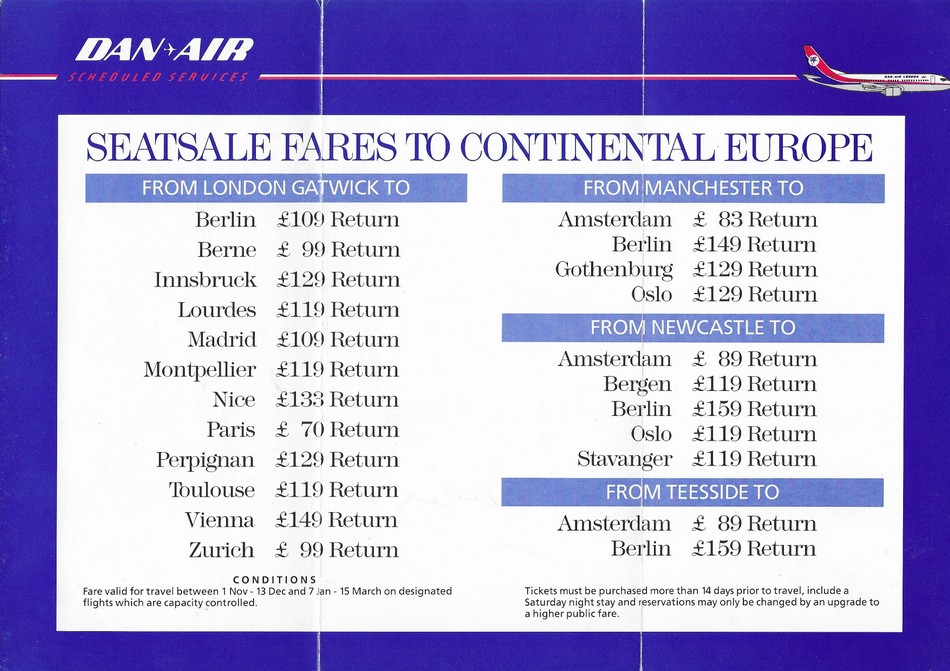
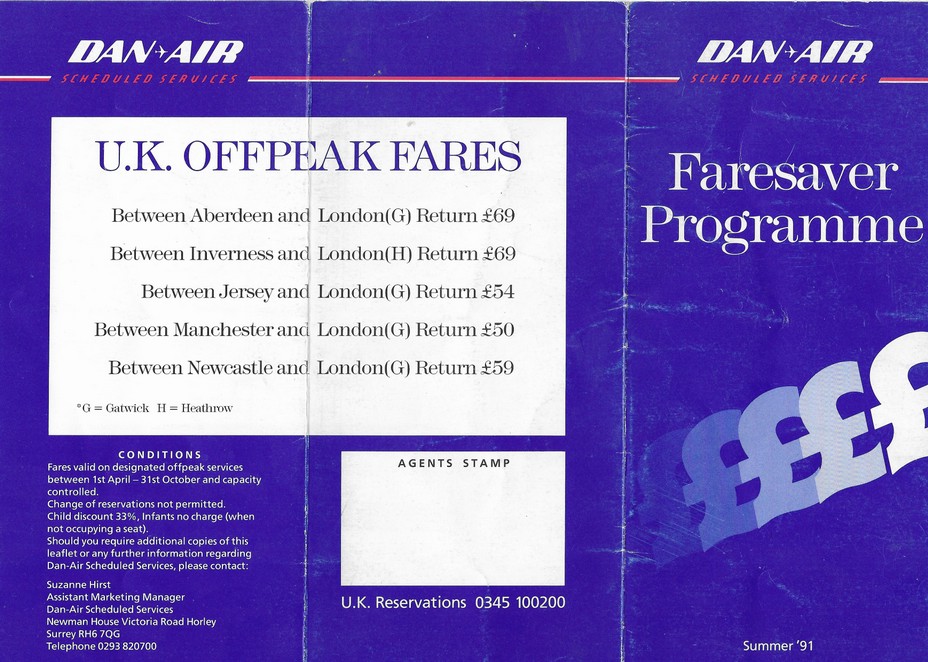
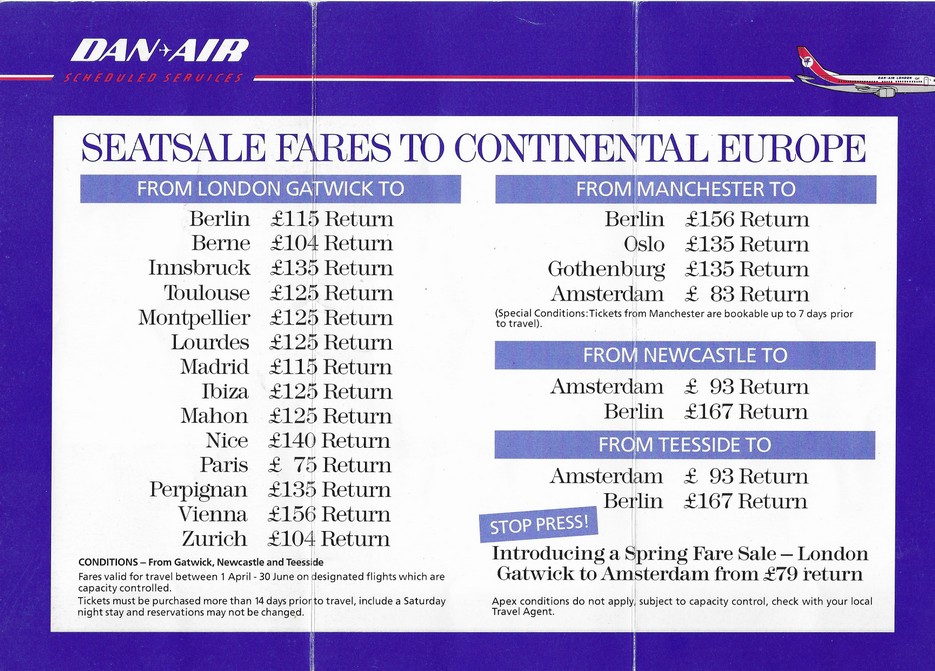
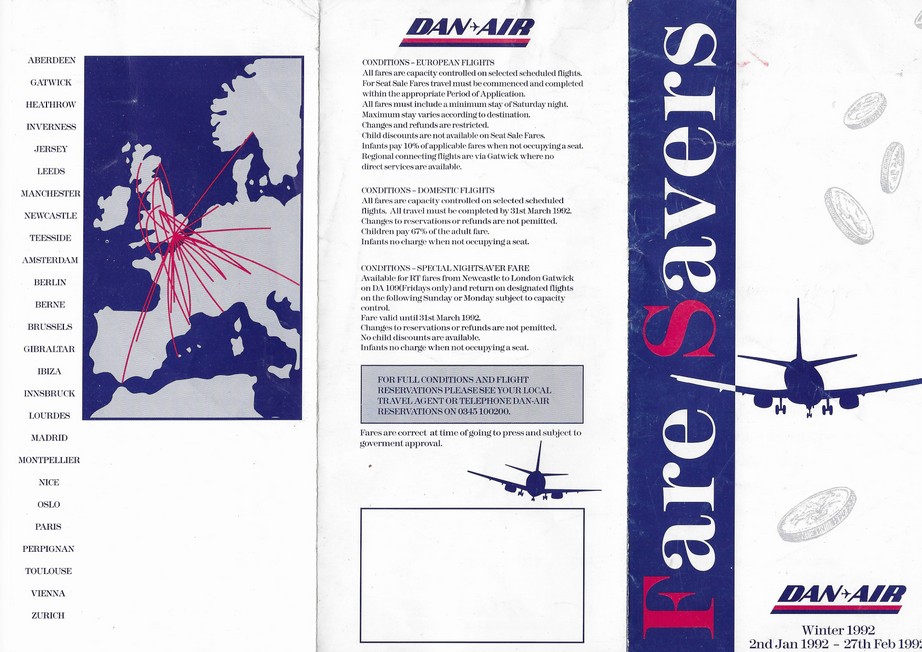
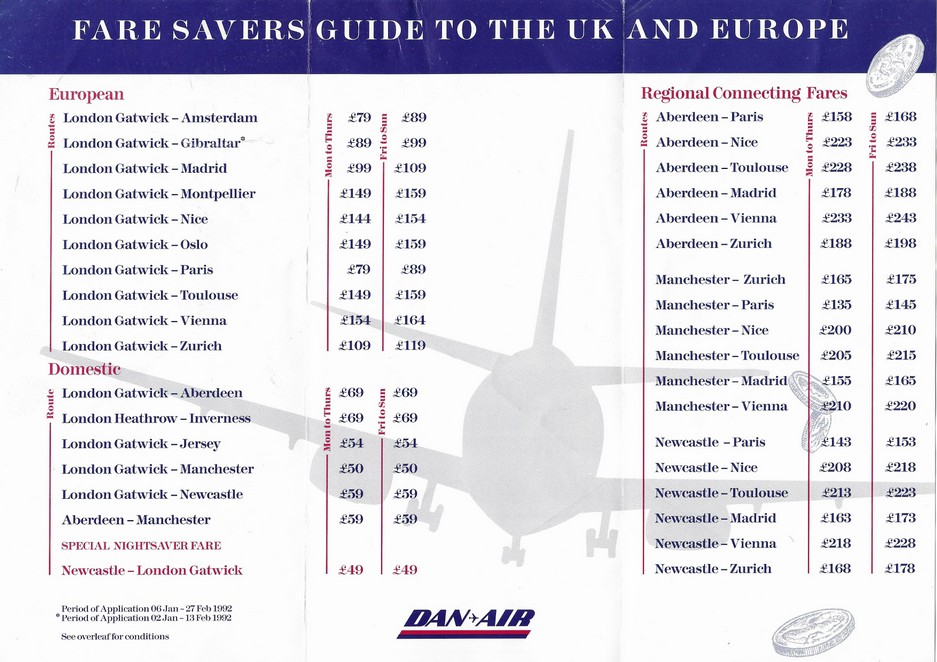

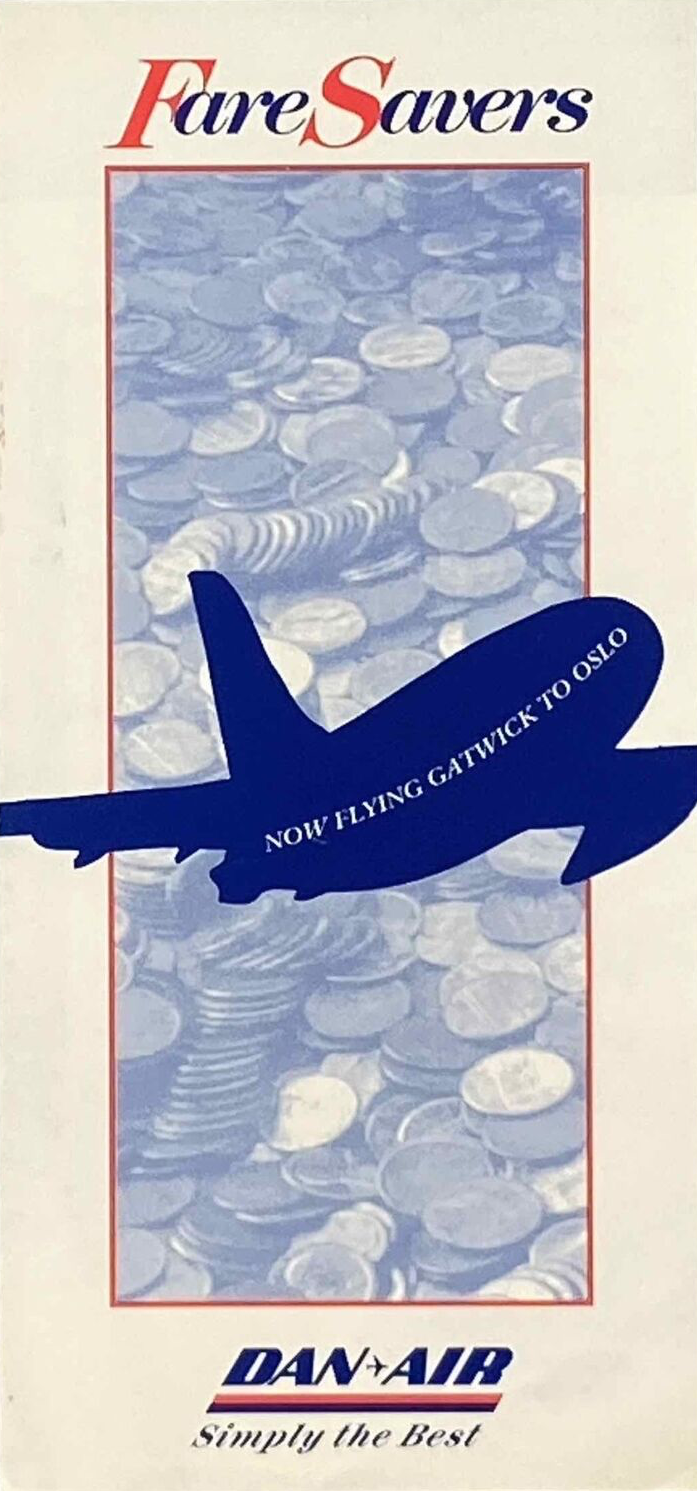


CLASS ELITE GALLERY
DISCUSS THIS SUBJECT
0
reviews